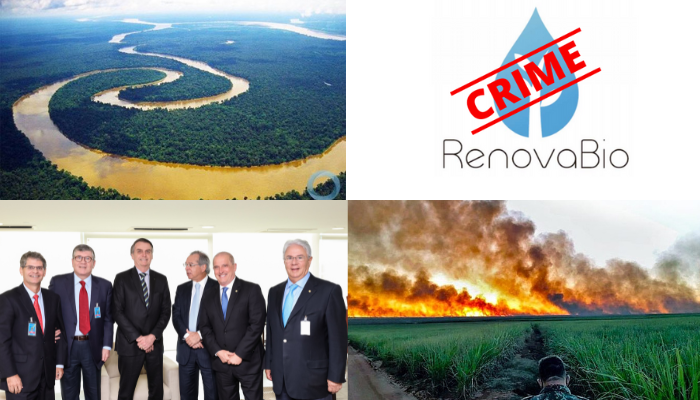Planck E PressCenter Articles
Why Should I Know More About Diseconomies?
Date published: 2016-09-22
Date modified: 2022-08-01
Reading time: 00:02:48

“The difficulty lies not so much in developing new ideas as in escaping from old ones.” John Maynard Keynes
In the mid-nineteenth century, whale oil used for lighting became very expensive due to predatory hunting. The quest for a new fuel source that could guarantee lighting was urgent and thus began the oil industry.
Initially, oil refining was only concerned with kerosene production and as a by-product, all gasoline was systematically dumped in the rivers. This is probably the best example of a diseconomy.
From an environmental perspective, when we utilize the most ordinary formula of gasoline and calculate the corresponding diseconomy related to 1kg dumped in rivers, we will encounter 50g of benzene and 350g of toluene.
Within the scenarios:
- “Problem-oriented approach: baseline (CML, 1999) - Human toxicity (HTP inf) - HTP inf. (Huijbregts, 1999 & 2000)”, the emission of benzene in freshwater has an environmental impact potential -EIP- of 1,830.88 and the emission of toluene in freshwater has an environmental impact potential (EIP) of 0.30276;
- “Problem-oriented approach: baseline (CML, 1999) - Freshwater aquatic ecotoxicity (FAETP inf) - FAETP inf. (Huijbregts, 1999 & 2000)”, the emission of benzene in freshwater has an environmental impact potential -EIP- of 0.09144 and the emission of toluene in freshwater has an environmental impact potential (EIP) of 0.29451;
- “Problem-oriented approach: baseline (CML, 1999) - Marine aquatic ecotoxicity (MAETP inf) - MAETP inf. (Huijbregts, 1999 & 2000)”, the emission of benzene in freshwater has an environmental impact potential (EIP) of 0.00265 and the emission of toluene in freshwater has an environmental impact potential (EIP) of 0.00124;
- “Problem-oriented approach: baseline (CML, 1999) - Freshwater sedimental ecotoxicity (FSETP inf) - FSETP inf. (Huijbregts, 1999 & 2000)”, the emission of benzene in freshwater has an environmental impact potential (EIP) of 0.06950 and the emission of toluene in freshwater has an environmental impact potential (EIP) of 0.21059;
- “Problem-oriented approach: baseline (CML, 1999) - Marine sedimental ecotoxicity (MSETP inf) - MSETP inf. (Huijbregts, 1999 & 2000)”, the emission of benzene in freshwater has an environmental impact potential (EIP) of 0.00143 and the emission of toluene in freshwater has an environmental impact potential (EIP) of 0.00127;
- “Problem-oriented approach: baseline (CML, 1999) - Terrestrial ecotoxicity (TETP inf) - TETP inf. (Huijbregts, 1999 & 2000)”, the emission of benzene in freshwater has an environmental impact potential (EIP) of 0.000014 and the emission of toluene in freshwater has an environmental impact potential (EIP) of 0.000014.
Following the abovementioned reference scenarios, we would have the following diseconomies related to the production of 1kg of gasoline in freshwater:
- Human toxicity: 91.5 teq 1,4-dichlorobenzene for 50g of benzene and 0.10598 teq 1,4-dichlorobenzene for 350g of toluene;
- Freshwater aquatic ecotoxicity: 0.004572 teq 1,4-dichlorobenzene for 50g of benzene and 0.103075 teq 1,4-dichlorobenzene for 350g of toluene;
- Marine aquatic ecotoxicity: 0.000133 teq 1,4-dichlorobenzene for 50g of benzene and 0.000432 teq 1,4-dichlorobenzene for 350g of toluene;
- Freshwater sedimental ecotoxicity: 0.003477 teq 1,4-dichlorobenzene for 50g of benzene and 0.073706 teq 1,4-dichlorobenzene for 350g of toluene;
- Marine sedimental ecotoxicity: 0.00007 teq 1,4-dichlorobenzene for 50g of benzene and 0.0004459 teq 1,4-dichlorobenzene for 350g of toluene;
- Terrestrial ecotoxicity: 0.0000007 teq 1,4-dichlorobenzene for 50g of benzene and 0.000004956 teq 1,4-dichlorobenzene for 350g of toluene.
The reference scenario adopts 1,4-dichlorobenzene as the equivalency factor. Therefore, the total diseconomy related to 1kg of gasoline discharged in rivers is 91,79 teq 1,4-dichlorobenzene. Considering that the average market price for 1,4-dichlorobenzene is US$2,000/t, we arrive at the following diseconomy values for 1kg of gasoline discharged in rivers:
- Human toxicity: US$183,211.96;
- Freshwater aquatic ecotoxicity: US$215.29;
- Marine aquatic ecotoxicity: US$1.13;
- Freshwater sedimental ecotoxicity: US$154.37;
- Marine sedimental ecotoxicity: US$1.03;
- Terrestrial ecotoxicity: US$0.01.
Following this rationale, we can conclude that the diseconomy caused by 1kg of gasoline discharged in rivers in the adopted scenarios amounts to US$183,583.79
But this is only one side of the story. Now, it seems almost insane that 160 years ago, we used to throw away such a valuable product as gasoline. According to the US Energy Information Administration, global gasoline consumption in 2014 was 8.73bbl/day, which is equivalent to sales of more than US$500billion/year. With the monetization of diseconomies, it is possible to find new and profitable possibilities for by-products and waste. It is only a matter of perspective and market.
Keywords
- gasoline pollution
- gasoline environment
- gasoline toxicity
- gasoline emissions
- gasoline impact
For further information about Planck E PressCenter, please contact us.
Divulging ingenious solutions
The mission of the Planck E PressCenter is to promote ideas, products and theories that have not yet reached the mainstream, as captured in our first release Eccentrics and their Ingenious Solutions.
Newsletter
Sign up for our weekly Planck E Newsletter, complete with the latest ingenious solutions.
Click here for the signup form.
Submit your ingenious solution
We encourage you to submit your ingenious solution, article, press release or "out of the mainstream" technical idea for publication on the Planck E PressCenter. Please send us an e-mail to presscenter@planck-e.com and enquire how.
To learn more about holistic engineering, solutions inspired by nature, monetization of diseconomies, training courses or the incorporation of Being Data to your day-to-day, please follow us on the social networks.

